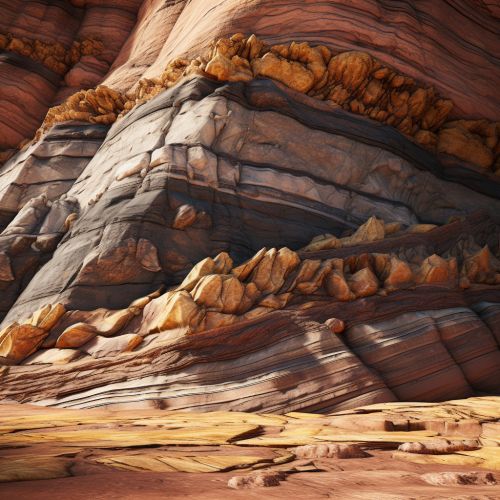Geochronology
Introduction
Geochronology is the scientific study of the age of the Earth and the temporal sequence of events related to the formation of the planet and its subsequent history. It involves the integration of information from a wide range of geological sciences, including stratigraphy, geochemistry, and paleontology.
History of Geochronology
The history of geochronology is a fascinating journey that traces the evolution of our understanding of the Earth's age. In the 19th century, the age of the Earth was estimated by geologists based on the time required for processes such as erosion and sedimentation to occur. However, these estimates were highly uncertain and varied widely.
The development of radiometric dating techniques in the early 20th century provided a more reliable method for determining the Earth's age. These techniques, which measure the decay of radioactive isotopes in rocks and minerals, have been refined and improved over the years, leading to increasingly accurate estimates of the Earth's age.
Principles of Geochronology
Geochronology is based on several fundamental principles. The principle of uniformitarianism, first proposed by James Hutton in the late 18th century, holds that the processes observed in operation today have been operating throughout geological time. This principle allows geologists to infer past events from observations of current processes.
Another key principle is the law of superposition, which states that in an undisturbed sequence of sedimentary rocks, the oldest rocks are at the bottom and the youngest at the top. This principle is used in relative dating to determine the sequence of geological events.
The principle of cross-cutting relationships is also crucial in geochronology. This principle states that a geological feature that cuts across another is younger than the feature that is cut.
Techniques in Geochronology
A variety of techniques are used in geochronology to determine the age of rocks, fossils, and sediments. These include radiometric dating methods, such as uranium-lead dating, potassium-argon dating, and carbon dating, as well as non-radiometric methods, such as dendrochronology and varve analysis.
Radiometric dating methods are based on the decay of radioactive isotopes. These methods are particularly useful for dating very old rocks and fossils. Non-radiometric methods, on the other hand, are often used for dating more recent events.
Applications of Geochronology
Geochronology has a wide range of applications in the geological sciences. It is used to establish the age of rocks and fossils, to date geological events such as volcanic eruptions and earthquakes, and to study the history of the Earth's magnetic field.
In addition, geochronology plays a crucial role in the study of climate change. By dating ice cores, lake sediments, and other geological records, scientists can reconstruct past climates and understand the mechanisms behind climate change.


Challenges in Geochronology
Despite its many successes, geochronology also faces several challenges. These include the difficulty of obtaining suitable samples for dating, the potential for contamination of samples, and the complexity of the mathematical calculations involved in radiometric dating.
Furthermore, while radiometric dating methods are generally reliable, they are not infallible. Errors can occur due to a variety of factors, including inaccuracies in the measurement of isotope ratios, variations in the rate of radioactive decay, and uncertainties in the initial concentrations of isotopes.
Future of Geochronology
The future of geochronology looks promising, with new techniques and technologies continually being developed. These advancements promise to improve the accuracy and precision of age determinations, and to extend the range of materials that can be dated.
One area of active research is the development of new dating methods based on novel isotopic systems. Another is the refinement of existing methods to improve their accuracy and precision.
See Also
Categories
Note: This article is a placeholder and needs to be expanded with more detailed information.
